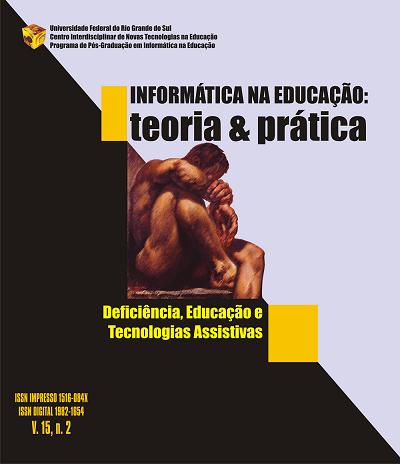A Simple Gaze Tracker for Computer Operation by the Disabled in Education
DOI:
https://doi.org/10.22456/1982-1654.36542Keywords:
Assistive technology. Gaze-tracker. Education. Disability.Abstract
A compact gaze tracker was developed which consists of a head band and electrodes which process the Electro-Oculo-Gram (EOG) reflecting the patient´s eye movements. We have confirmed that the processed EOG signal correlates well with gaze angle, and we show that the instrument we designed enables a child to move a target on a screen up to 40 degrees left-right from central sight. To achieve this, a signal processing circuit was designed and placed on a head band to minimize noise. Further processing is based on the identification of saccadic eye movements and on the educated calculation of the estimated gaze angle as a result of angle change in both directions. A 75% success rate was achieved to detect transitions of eye positions in 5° steps from +40° to -40°. First tests by normal children suggest that the device may prove useful for communication by the disabled (e.g. patients with no control on hand movements). In such cases, extensive personal training will tap on neurological plasticity to achieve the required performance level for computer mouse command of educational games and for interactive applications in general.Downloads
Download data is not yet available.
Downloads
Published
2012-12-28
How to Cite
SIMINI, F.; TOUYA, A.; SENATORE, A.; PEREIRA ELSO, J.; DE CASTELLET, L. A Simple Gaze Tracker for Computer Operation by the Disabled in Education. Computers in education: theory & practice, Porto Alegre, v. 15, n. 2, 2012. DOI: 10.22456/1982-1654.36542. Disponível em: https://seer.ufrgs.br/index.php/InfEducTeoriaPratica/article/view/36542. Acesso em: 24 jun. 2025.
Issue
Section
Artigos
License
The copyright for papers published in this journal belong to the author, with rights of first publication for the journal. As the papers appears in this publicly accessed journal, the papers are for free use, receiving their credit, in educational and non-commercial uses. The journal will allow the use of the papers published for non-commercial purposes, including the right to send the paper to publicly accessed databases.
Received 2012-12-21
Accepted 2012-12-21
Published 2012-12-28
Accepted 2012-12-21
Published 2012-12-28


